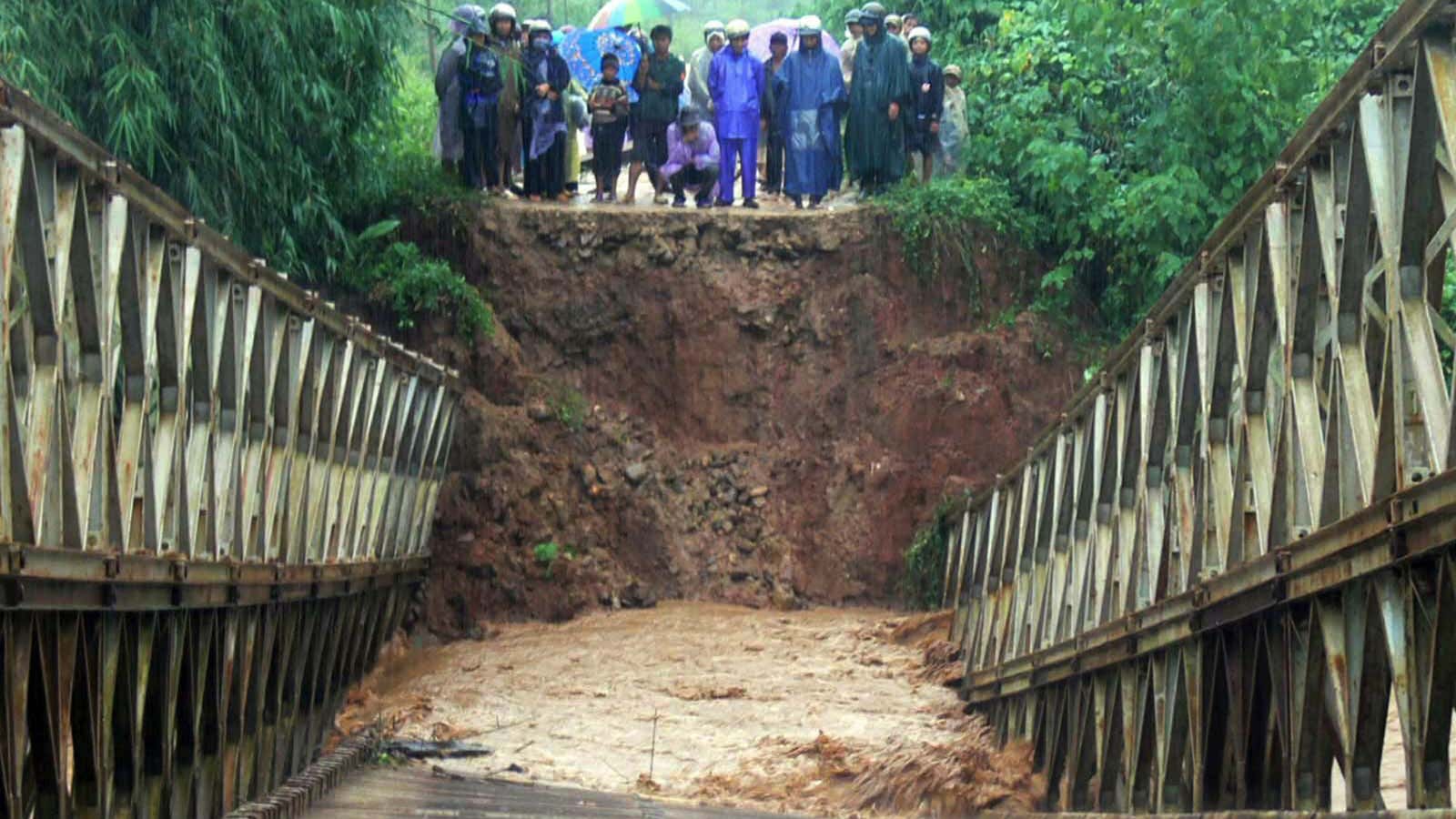Vietnam’s bridges are in a sorry state. Nine people were killed and 41 injured when a pedestrian bridge collapsed last month—and that’s where the bridges exist at all. A video surfaced this week of children and adults floating across the Nam Po river in northern Vietnam in nothing more than plastic shopping bags, raising questions about crucial infrastructure is in one Southeast Asia’s fastest-growing economies.
Travelers crawl into a large plastic bag that is then sealed—hopefully with enough oxygen to last the crossing—and then pulled across the river by a strong swimmer. One 23-year-old woman in the province of Dien Bien who relies on the bag method to get to work describes the experience as “shaky and scary.”
Still, for some this may be the preferable means of crossing rivers during the rainy season. More than 50 rivers in Dien Bien need bridges, according to local media. In the southern coastal province of Quang Ngai, an estimated half of 24 suspension bridges are so degraded people believe they could collapse at any time. And in the southern Binh Dinh province, a rickety wooden bridge that crosses the Con River still serves thousands of locals, even though several people fallen to their deaths over the last few years. The ministry of transport said last month that 40% of all suspension bridges in the country need urgent repair.
Stories like these are a contrast to the often rosy picture of Vietnam’s fast-growing economy. The Boston Consulting Group recently concluded that Vietnam has the fastest-growing middle class in the region. But inefficient infrastructure remains one of the largest obstacles to the country’s development, according to a joint study (pdf) by the World Bank and Vietnam’s finance ministry.
One problem is that local provinces, which have to compete with each other for funding, tend to favor large revenue-generating projects like airports and deep-sea ports over simple things like bridges. “Investment decisions are driven mainly by administrative considerations and the desire to develop revenue-generating projects, with only weak links to strategic national priorities,” the report concludes.
Earlier this month, prime minister Nguyen Tan Dung approved a program to build 450 bridges by the end of the decade in rural areas where communities are cut off during the rainy season. The video has done some good as well. Perhaps embarrassed by the spectacle of its citizens using plastic bags as river ferries, Vietnam’s minister of transport has pledged to build a proper bridge across the Nam Po river.
